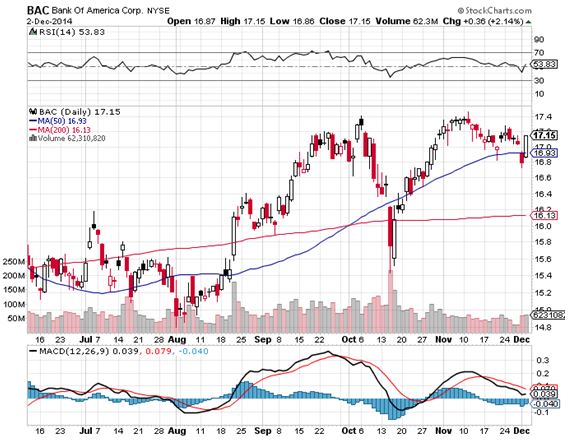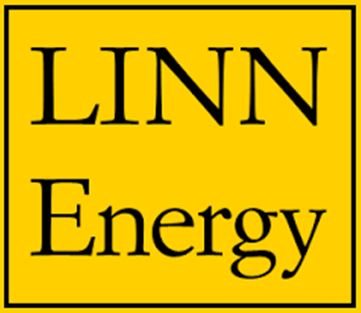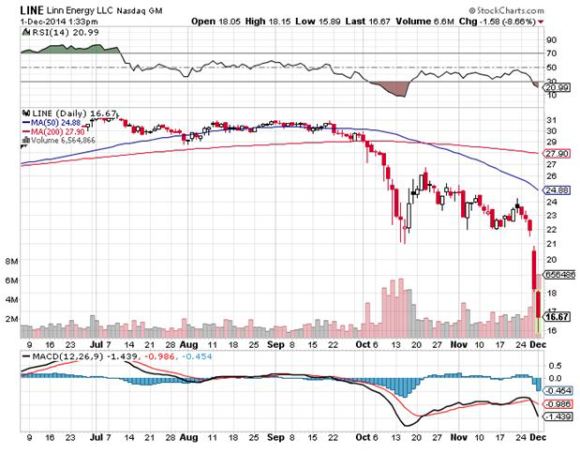While the Diary of a Mad Hedge Fund Trader focuses on investment over a one week to six-month time frame, Mad Day Trader, provided by Jim Parker, will exploit money-making opportunities over a brief ten minute to three day window. It is ideally suited for day traders, but can also be used by long-term investors to improve market timing for entry and exit points. Read more
While the Diary of a Mad Hedge Fund Trader focuses on investment over a one week to six-month time frame, Mad Day Trader, provided by Jim Parker, will exploit money-making opportunities over a brief ten minute to three day window. It is ideally suited for day traders, but can also be used by long-term investors to improve market timing for entry and exit points. Read more
Global Market Comments
December 3, 2014
Fiat Lux
Featured Trade:
(10 REASONS WHY I?M WRONG ON BOND),
(TLT), (TBT), (LQD), (MUB), (ELD), (JNK),
(A SPECIAL NOTE ON EXERCISED BANK OF AMERICA OPTIONS), (BAC)
iShares 20+ Year Treasury Bond (TLT)
ProShares UltraShort 20+ Year Treasury (TBT)
iShares iBoxx $ Invst Grade Crp Bond (LQD)
iShares National AMT-Free Muni Bond (MUB)
WisdomTree Emerging Markets Lcl Dbt ETF (ELD)
SPDR Barclays High Yield Bond ETF (JNK)
This morning, Bank of America paid out a five cent quarterly dividend, which works out to an annualized yield of 1.18% and the shares will open this morning trading ex.
For those of you who have wisely followed my Trade Alert to buy the Bank of America (BAC) December, 2014 $15-$16 vertical bull call spread, good for you. As of last night, you were showing a profit of 0.88% on the position.
However, there is a chance that the short side of the trade, the December, 2014 $16 calls were exercised against you before the opening this morning. If that is the case, you would have been informed by your broker by email and immediate action is required on your part to avoid unnecessary risk.
The options traded on US exchanges and referred to in my Trade Alerts are American style, meaning that they can be exercised at any time by the owner. This is in contrast to European style options, which can only be exercised on the expiration day.
The vertical option spreads that I have been recommending for the past year are composed of a deep in-the-money long strike price plus a short portion at a nearer money strike price.
When stocks have high dividends, there is a chance that the near money option you are short, the December, 2014 $16 calls, gets exercised against you by the owner.
This requires you to deliver the stock equivalent of the option you are short, plus any quarterly dividends that are due. Don?t worry, because your long position perfectly hedges you against any principal risk in this situation.
However, you will be liable for the five-cent dividend, which works out to $5 for every call option you are short. If you executed the full 110 contracts recommended in my Trade Alert that works out to $550 (100 shares per option X $.05 dividend X 110 contracts).
You then need to email or call your broker back immediately informing him that you want to exercise your remaining long option position to meet your assigned short position.
This should completely close out your position and leave you with about half your remaining profit. This is not an automatic process and requires action on your part!
It also means that you get your margin back, plus your profit, the next day, and don?t have to run the position another two weeks into expiration. That means you are free to use the money to put on new trades.
Assignments are made on a random basis by an exchange computer, and can happen any day. You may get exercised, or you may not. Exercise means the owner of the option that you are short completely loses the entire premium on his call.
Dividends have to be pretty high to make such a move economic, usually at least over 3% on an annual rate. But these days, markets are so efficient that traders, or their machines, will exercise options for a single penny profit.
In fact, there are now some dedicated hedge funds and independent individual options traders that specialize in buying up calls the day before and ex dividend day to capture a tiny 29 basis point gross overnight profit. That is before execution expenses.
It hardly seems worth it to me, but I guess what they lack in size, they make up in volume. Hey, you do what you can do to earn a living.
Surprise assignments create a risk for option spread owners in a couple of ways. If you don?t check your email every day, you might not be aware that you have been assigned.
Alternatively, such emails sometimes get lost, or hung up in local servers or spam filters, which occasionally happens to readers of my own letter.
Then, you are left with the long side deep out-of-the-money call without on offsetting short position. You are now unhedged. This means you will have a substantially higher margin requirement, and is the equivalent of going outright long the stock in large size.
Suddenly, you are playing a totally different game, and not one I recommended. If the stock rises, then you could be in for a windfall profit. But if it falls, you could take a big hit. Guess which way the stock usually goes.
Better to completely avoid this situation at all cost and not take the chance. You are probably not set up to do this type of trading.
If you don?t have the cash in your account to cover this, you could get a margin call. If you ignore this call as well, your broker will close out your position at market without your permission.
It could produce some disconcerting communications from your broker. They generally hate issuing margin calls, and could well close your account if it is too small to bother with, as they create regulatory issues.
In order to get belt and braces coverage on this issue, it is best to call your broker and find out exactly what are their assignment policies and procedures. Believe it or not, some are still in the Stone Age, and have yet to automate the assignment process or give notice by email.
An ounce of prevention could be worth a pound of cure here. You can?t believe how irresponsible some of these people can be. The phone calls are free.
Consider all this a cost of doing business, or a frictional execution cost. In-the-money options are still a great strategy. But you should be aware of all the ins and outs to get the most benefit.
Good Luck and Good Trading
John Thomas
While the Diary of a Mad Hedge Fund Trader focuses on investment over a one week to six-month time frame, Mad Day Trader, provided by Jim Parker, will exploit money-making opportunities over a brief ten minute to three day window. It is ideally suited for day traders, but can also be used by long-term investors to improve market timing for entry and exit points. Read more
While the Diary of a Mad Hedge Fund Trader focuses on investment over a one week to six-month time frame, Mad Day Trader, provided by Jim Parker, will exploit money-making opportunities over a brief ten minute to three day window. It is ideally suited for day traders, but can also be used by long-term investors to improve market timing for entry and exit points. Read more
While the Diary of a Mad Hedge Fund Trader focuses on investment over a one week to six-month time frame, Mad Day Trader, provided by Jim Parker, will exploit money-making opportunities over a brief ten minute to three day window. It is ideally suited for day traders, but can also be used by long-term investors to improve market timing for entry and exit points. Read more
While the Diary of a Mad Hedge Fund Trader focuses on investment over a one week to six-month time frame, Mad Day Trader, provided by Jim Parker, will exploit money-making opportunities over a brief ten minute to three day window. It is ideally suited for day traders, but can also be used by long-term investors to improve market timing for entry and exit points. Read more
Global Market Comments
December 2, 2014
Fiat Lux
Featured Trade:
(DECEMBER 3 GLOBAL STRATEGY WEBINAR),
(LOADING UP ON LINN ENERGY),
(LINE), (USO), (UNG), (XLE),
(THE MOST FUNCTIONAL WORD IN THE ENGLISH LANGUAGE)
Linn Energy, LLC (LINE)
United States Oil ETF (USO)
United States Natural Gas ETF (UNG)
United States Oil ETF (USO)
You can pay up to $17 a unit for (LINN) and have a good chance of making a quick, snapback profit.
All of a sudden, everyone I know in Texas, and there are quite a few of them, called to tell me to buy Linn Energy, all within the space of one hour. I summarize their diverse comments below.
We have reached a margin call induced capitulation sell off in Linn Energy this morning, when oil was trading as low as $64 a barrel at the European opening.
There were obviously also a couple of leveraged energy and commodity funds that blew up and are undergoing forced liquidation at the market.
Add to that all the individuals who bought (LINN) on margin when the yield was only 8% so they would take 16% home to the bank.
This has taken the price of the units down to an artificial, and hopefully temporary, low of $15.90. At that price, the yield was a mind blowing 17% (after all, this is California).
It was a classic ?Throwing out the baby with the bathwater? moment. (LINN) gets 54% of its $1.6 billion in revenues from natural gas, which has held up remarkably well in the energy melt down, thanks to the early arrival of the polar vortex this winter.
Only 22% of its income derives from oil related projects, and half of this is hedged in the futures market from any downside exposure in the price of oil, according to the company?s recent pronouncements. Linn has actually plunged more than oil from its recent peak.
Does a loss on 10% of its revenues justify a gut wrenching 50% drop in the units? I think not.
But then, I am being rational and analytical, and I can assure you that the energy markets are now anything but rational and analytical.
Its not like oil is going to stay this low forever. Try to buy oil for delivery in the futures market two years out, and it has already recovered to $75/barrel, and there is very little available at that price.
What happens when the price of something goes down? Demand increases, and that will be good for Linn Energy, which is inherently more of a volume play on gas and oil, not a price play.
Keep also in mind that the absurd salaries the company was paying for workers in the Midwest has also vaporized. Roustabouts can now be had for as little as $75,000 a year compared to $200,000 only six months ago. This will cut (LINN)?s costs quickly and flow straight to the bottom line.
Falling costs and rising volumes sound like a winning formula to me.
And if you have the courage to buy the units here on margin, the yield rockets to a breathtaking 34%. It therefore can?t stay this low for long.
Linn Energy, LLC is an independent oil and natural gas company based in Houston, Texas. It holds oil and gas producing assets in many parts of the United States: Mid-Continent, including properties in Texas, Louisiana, and Oklahoma; the Hugoton Basin in Kansas; the Green River Basin in Wyoming; East Texas; California, including the Brea-Olinda Oil Field in Los Angeles and Orange Counties; the Williston/Powder River Basin, which includes a position in the Bakken Formation; Michigan/Illinois; and the Permian Basin in Texas.
At the end of 2012, the firm reported proved reserves of 4,796 bcfe (billion cubic feet equivalent) of oil and gas combined. Of this total, 24% was crude oil, 54% natural gas, and 22% natural gas liquids.
Structured as a master limited partnership for tax purposes, the firm is required to pay out most of its cash reserve to unitholders (stockholders) each quarter as distributions, thereby ducking the double taxation of corporate taxation.
However Linn retains some attributes of a limited liability corporation, including giving voting rights to its unitholders. Linn Energy also operates a subsidiary, LinnCo, a C Corporation, which is subject to different tax rules from its parent company.
All we have to do is survive the near term volatility and Linn Energy will be a winner.
Legal Disclaimer
There is a very high degree of risk involved in trading. Past results are not indicative of future returns. MadHedgeFundTrader.com and all individuals affiliated with this site assume no responsibilities for your trading and investment results. The indicators, strategies, columns, articles and all other features are for educational purposes only and should not be construed as investment advice. Information for futures trading observations are obtained from sources believed to be reliable, but we do not warrant its completeness or accuracy, or warrant any results from the use of the information. Your use of the trading observations is entirely at your own risk and it is your sole responsibility to evaluate the accuracy, completeness and usefulness of the information. You must assess the risk of any trade with your broker and make your own independent decisions regarding any securities mentioned herein. Affiliates of MadHedgeFundTrader.com may have a position or effect transactions in the securities described herein (or options thereon) and/or otherwise employ trading strategies that may be consistent or inconsistent with the provided strategies.





